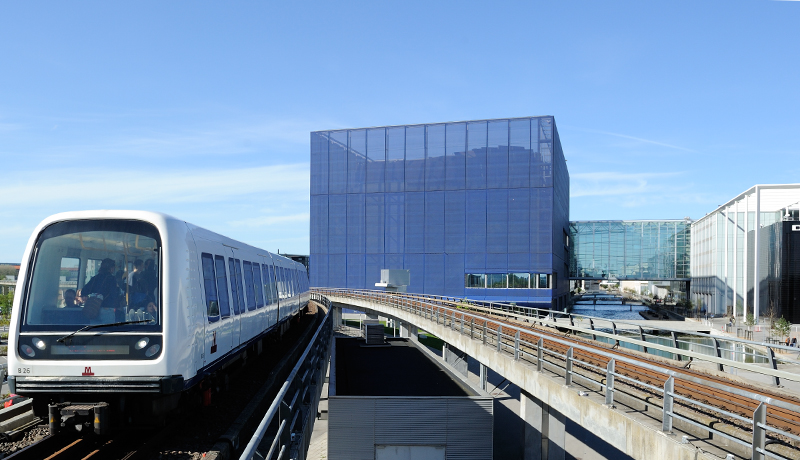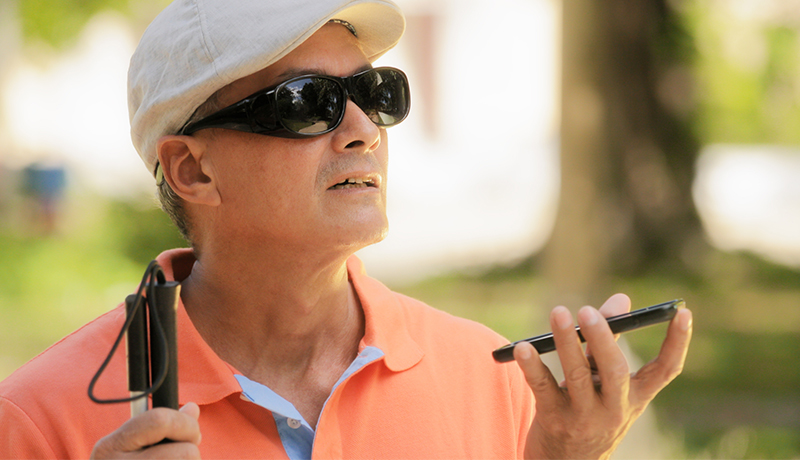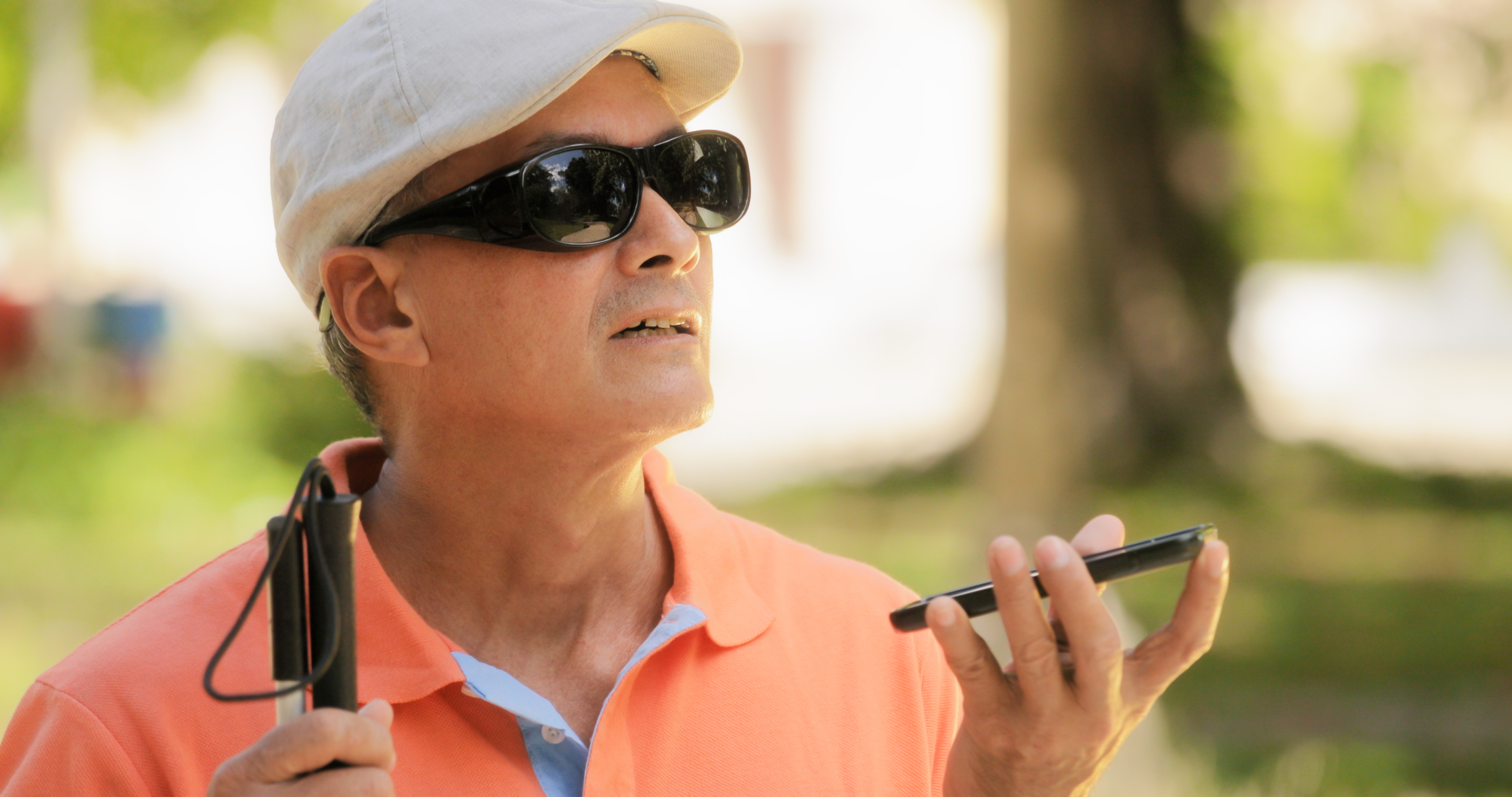A smart city?
Increasingly digital technology is becoming integrated into the ways our cities work. It offers city dwellers day to day conveniences, like the GPS navigation apps which direct us around rather than through traffic jams. It generates data that cities could use to make spaces better too – for instance, that same traffic data that helps you avoid a tailback might in future help planners to improve road and public transport networks. This link between cities, data and technology is known as the smart city.
 An autonomous metro train on the M1 line arrives at DR Byen station in Copenhagen, Denmark
An autonomous metro train on the M1 line arrives at DR Byen station in Copenhagen, Denmark
The research
Smart city technologies have the potential to make everybody's lives better, but they might be particularly useful for people with disabilities. Research by Sophie Watson and I have looked at the technologies available for visually impaired people that aims to help them navigate city spaces.
There need for these technologies evident. According to the RNIB, around 40% of visually impaired people “feel ‘moderately’ or ‘completely’ cut off from people and things around them” leading to loneliness, exclusion, and consequent mental health difficulties. Smart tech could help visually impaired people do things sighted people take for granted, like walking from place to place or taking public transport. This would make socialising and finding work much easier.
The smartphone revolution
The early interest in using technology to help those with disabilities can be traced back decades. In the 1990s, researchers examined a system of GPS based navigation for the visually impaired in which a GPS receiver would be carried in a backpack dedicated for that purpose. But while the technology existed, the need to have a rucksack full of heavy computing equipment made this approach unfeasible.
It is the emergence of the smartphone, with its built-in GPS receiver and sophisticated mapping software, which has begun to make tech assisted navigation possible for the visually impaired. A range of apps are emerging, a commonly used one being BlindSquare. The app draws on the data from the reviewing platform FourSquare to offer turn by turn navigation to the locations of specific businesses or points of interest.
For many visually impaired people, BlindSquare business listings facility alone is an incredible boon. While sighted people get to know the shops and services in their vicinity just by looking around them, visually impaired people can find it hard to get to know new places. In our research, we found that people used BlindSquare to browse what was available in their neighbourhood. The app helped them find new places that they’d like to visit.
 Smartphones have provided portable access to maps and GPS technology
Smartphones have provided portable access to maps and GPS technology
A complex challenge
The technology is far from perfect. As part of our research, visually impaired people demonstrated their use of BlindSquare to us. We undertook walk-alongs with each participant, asking them to describe their experience of using the app and the feedback they were receiving from it.
Most found that, though the guidance was better than nothing, it was still nowhere near precise enough for the intricacies of navigating in a city. Paths connecting pavements were missed out generating long detours, and in one case a user was led across the traffic lanes of a busy bus station.
This is why the developers of Georgie, a similar app, decided not to include turn by turn navigation. They saw digital technology not as a solution to the difficulties of navigating a city, but merely as something that could be layered on to the range of navigation aids that visually impaired people use. By announcing junctions or points of interest as the user neared them, their app aimed to provide reassurance as people guided themselves using their mental map of the city and other tools like their guide dog or white cane.
The richness of non-technological information that visually impaired people use to navigate should not be underestimated.
A pluralistic approach
The richness of this non-technological information that visually impaired people use to navigate should not be underestimated. Our research participants spoke of locating themselves by detecting the subtle change of surface beneath their feet, the sounds of traffic, or even the direction of the wind or the feeling of the sun on their face. Hitting the ground with their white cane and listening to the sound it makes can help differentiate between types of spaces too, the sound is subtly different in an enclosed area compared to an open one.
 A growing number of specialist navigation apps are available for the visually impaired
A growing number of specialist navigation apps are available for the visually impaired
Cautious optimism
Our findings on how smart technologies might help visually impaired people navigate the city reflect our broader impressions of the emergence of the smart city, those being a sense of cautious optimism. Cautious because some voices in the field of smart speak a language verging on the utopic, and as our research demonstrated technology alone isn’t the solution to every problem. But optimistic too, because smart tech is already adding something new and valuable and has great potential to improve people’s lives for the better, with more exciting innovations in the pipeline.




Rate and Review
Rate this article
Review this article
Log into OpenLearn to leave reviews and join in the conversation.
Article reviews